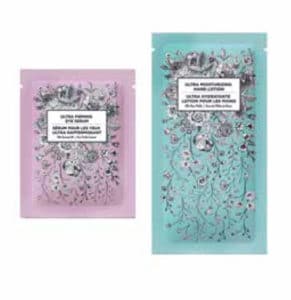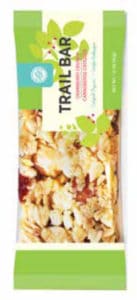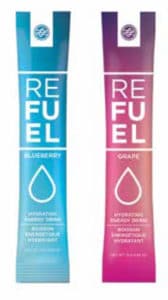As you walk the aisles of your local grocery store or pharmacy, you’ll see single-serve packaging everywhere. From snacks (granola bars, cookies, crackers, trail mix and candy), to beverages (tea bags, coffee and drink crystals), cleaning products (laundry pods, dishwasher tabs and cleansing wipes) and even condiments (salt, pepper, salad dressing, cream and sugar). These single-serve items contain portion controlled, individually packaged items that offer a ready-to-eat or ready-to-use product for today’s busy consumer.
What’s in it for me?
Convenience. Why should you consider adding this type of packaging to your product mix? The list is a long one, with convenience for the consumer ranking at the top. Portability and durability are also key, allowing your product to travel further. For the health-conscious consumer, single serve-packaging for food items can assist with portion control (think: a snack-size bag of potato chips versus an over-sized family pack). And, for the cost-conscious consumer, portion control can avoid over-use or waste of products (think: single-serve shampoo pouches versus dispensing from a large bottle).
Fresh. Pre-portioned products can extend freshness and shelf life. Consumers will only open the amount of product they intend to use, while the rest stays fresh and can be opened at another time.
Green. From an environmental perspective, production often involves less energy and fewer natural resources when compared to a rigid pack alternative. The higher product-to-package ratio also results in less waste going to landfill vs. rigid containers.
Inexpensive. Cost reduction is also a bonus. Flexible packaging requires less material, less manufacturing overhead and lower shipping costs when compared to rigid packaging. This also allows for faster lead-times, meaning your distributors (and ultimately, consumers) receive your products much sooner.
What’s in it for my brand?
Versatility. All flexible packaging films can be digitally printed, bringing the benefit of small runs, the versatility of combining hundreds of skus/versions, variable content and no traditional analog plate set ups. Digital printing makes flexible packaging easy to customize, and eliminates many high-cost, artwork-imposed limitations when compared to traditional analog printing.
Exposure. Single-serve flex packs allow you to get your product into the hands of the consumer to try before they buy. Brands can also experiment and conduct trial markets to get feedback from consumers in the early stages of product development. Further, sample packs can be used in trade shows, marketing kits, media launches, promotional programs, co-branding opportunities and for in-store sampling.
Accessibility. Single-serve products introduce you to the “bottom of the pyramid,” which is the largest (but poorest) socio-economic group. The bottom of the pyramid consumer still desires to use higher end products, but often does not have the means to buy larger volumes, and they tend to buy less quantity but more frequently. By reducing the unit cost, you’re able to get products into the hands of consumers that may never be able to afford full servings. Think: luxury shampoos, soaps and expensive spices that can be sold in single-unit doses.
How does the packaging work?
Flexible packaging is much more complex than simply adding a label to your product. The reason being that where a label is applied to the primary package, such as a bottle, the flexible packaging films are the primary package. This means that great care must go into selecting the right package construction based on what’s being packaged and its desired shelf life.
Here, at Lorpon Labels, we manufacture printed roll stock film, which is processed mainly on two different types of packaging and filling lines.
- Vertical Form Fill & Seal (VFFS) machines are used primarily for powders, liquids and creams, confectionery, some salty snacks and more.
- Horizontal Form Fill & Seal (HFFS) machines are used for snack bars, baked goods, sandwiches and more.
Today, many Form Fill & Seal (FFS) systems are highly sophisticated, with speed and versatility being the major benefits. The variety of FFS technologies incorporate a wide range of material types, and are used across numerous markets including food, drinks, cosmetics, electronics, stationery, tobacco, chemical, medical and pharmaceuticals.
What are the packaging options?
There are many different types of film that can be used, and the choice is highly dependent on the product to be packaged and the barrier properties required. The films available can be single layer, but are often multi-layer constructions to improve the barrier properties. Packaging films have the ability to protect products from two main contaminates—oxygen and moisture, which can reduce shelf life and product freshness or stability. The packaging films all have different barrier properties, and generally the higher the barrier needed, the higher the price of the film.
 Another main factor in the packaging film is the sealing strength and type of products used to create the seal. The sealant layer is the inside part of the packaging film and, when sealed to itself with a combination of heat and pressure, it creates a hermetic seal and forms the package. Paper/film constructions can also be used where the outer face material is a paper, and the inner barrier and sealant layers are films.
Another main factor in the packaging film is the sealing strength and type of products used to create the seal. The sealant layer is the inside part of the packaging film and, when sealed to itself with a combination of heat and pressure, it creates a hermetic seal and forms the package. Paper/film constructions can also be used where the outer face material is a paper, and the inner barrier and sealant layers are films.
With millennials eager as ever to incorporate convenience and functionality into their busy lives, single-serve, flexible packaging has become a staple. There are benefits for you as the producer, too, including increased exposure and functionality, and—ultimately—a reduced cost. Our team at Lorpon Labels can help you determine the best packaging options for your brand and your consumers, too. Keep up with the rise of single-serve packaging; contact our team today!
